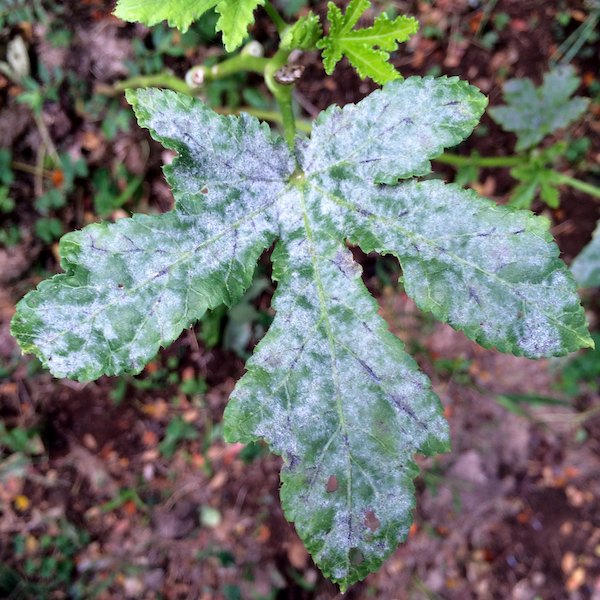The Difference Between Fungal and Bacterial Infections in Your Plants
•Posted on July 20 2020

Determining the difference between a fungal and a bacterial infection in your plant makes a difference in the treatment, both chemical and garden modifications to prevent the disease from spreading.
What is a Fungal Infection in Plants?

Fungal Infection of Oak Leaf
In a nutshell, fungi are living organisms that cause plant infections.
Fungus, the singular term, can take different forms, and different types of plants attract different types of fungus.
Fungi can attack the berries of plants, the leaves, roots, or all three.
Treating these often involves killing the fungus and creating an environment that reduces the chances of it coming back.
Fungi reproduce through spores which can be dispersed through the air. Therefore, more than one plant in your garden can quickly become infected.
What is a Bacterial Infection in Plants?

Bacterial Spot in Tomatoes
Bacterial infections can clog the plants' ability to absorb and conduct water and to extract nutrients from the soil.
A bacterial infection can quickly affect the plant, sometimes within a day, causing it to wilt and droop.
What Causes Bacterial and Fungal Infections?
Both bacteria and fungi can be spread by animals, people, and other plants.
Bacteria need contact to infect, while fungi spores may only need a strong breeze to travel from one garden to the next.
Common Signs of Bacterial Infections On Your Plants

Yellow Halos on Tomato Leaf Signal Bacterial Infection
Bacterial diseases can be difficult to diagnose, and many of the signs are hard to see. However, a common trait of bacterial plant disease is "bacterial ooze." This can look like water-soaked lesions on the leaves, or bacteria steaming in water from a cut stem.
Other bacterial plant infections include leaf spots with a yellow "halo", fruit spots, or a canker. Some plants may have a crown gall, and on woody plants, a shepherd's crook ending on the stem ends.
Common Signs of a Fungal Infection

Fungal plant disease is easier to spot than bacterial.
You'll notice that some of your plans look off, or that some of the leaves have a discoloration.
Fungal signs include stem rust (wheat stem rust) and leaf rust (common leaf rust in corn).
Leaves may have sings of sclerotinia (white mold) or powdery mildew on the top.
Symptoms of fungal infections include leaf spots (septoria brown spot) and Chlorosis (yellowing of leaves).
Other types of plant fungus may present a birds-eye spot on berries (anthracnose) or damping-off of seedlings (phytophthora).
Treatment and Prevention
Treating bacterial and fungal infections involves killing them entirely.
Your plants may need more than one water-soluble treatment, as the first round may not catch every spore or bacterial cell.
Copper sprays may help reduce the spread, but often, destroying the infected plants is the only option.
Preventing regrowth may include replacing your potted plants in new soil, or moving them to another area.
For gardens, you'll need to remove all infected plants. You may be able to rehabilitate them, but topping the spread of bacteria or fungal spores is critical to preserving the rest of your plants.
Consistent antibacterial and anti-fungal sprays and water-soluble fertilizers are often the only way to prevent both fungal and bacterial plant diseases.
A consistent spray regimen will help your plants develop a robust ability to fight off these microscopic pests.
Ready to Get Started?
At Greenway Biotech, we're committed to the best plant treatment solutions.
Visit us online to explore our treatment options and understand our unique story.
Our team can also guide you to the best treatments for your plants.
Related Posts:

Comments
0 Comments
Leave a Comment